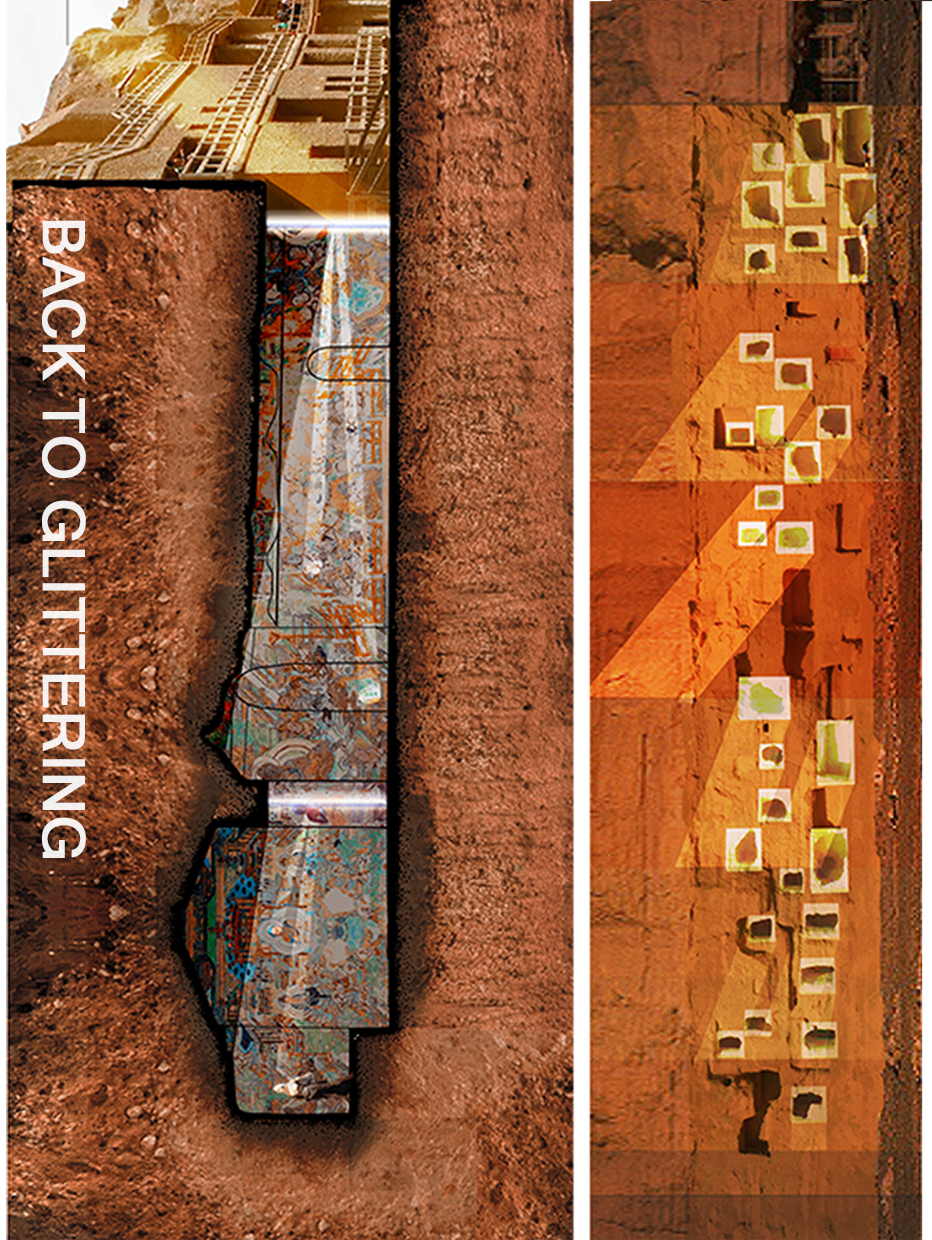BACK TO GLITTERING

Category
Daylight in buildings - Region 4: Asia and Oceania
Students
HE SHIYU
Lixingyue Zhang
Yuqi Jiang
Rukai Li
Yizhi Chen
Teacher
Yaodong Chen
School
Southwest Jiaotong University
Country
China
Download
Download ↓
Built in the pre-Qin period (366 AD), the Mogao Caves have been under construction for over a thousand years and now it has a huge site with 735 caves, 45,000 square meters of frescoes and 2,415 painted clay sculptures, making them the largest and richest surviving site of Buddhist art in the world. In 1987, the Mogao Caves were listed as a World Heritage Site.But years of wind and rain have caused the caves’ murals to suffer from the harsh environment, while the large number of tourists entering the caves has also had a serious impact on them.Visitors are able to view the interior murals through an optical zoom lens with manual magnification from outside the cave or from the front room, reducing the risk of harm to the murals when people enter the main room. Special glass with diffusion function is placed at the cave entrance and the front room to reduce the entry of harmful rays, so that daylight can illuminate the dark cave evenly and gently. Double-layer glass can effectively reduce the intrusion of ultraviolet and infrared rays, so that the murals are free from harmful light, while normal light can also enter the cave to illuminate the interior murals, which is conducive to visitors’ viewing. To reduce the damage to the caves from the outside environment, special glass was designed at different angles according to the location of the caves, and the sun’s rays were introduced at different times of the day according to the sunlight hours, ensuring that each cave was protected from direct sunlight for a fixed period of time each day.

































